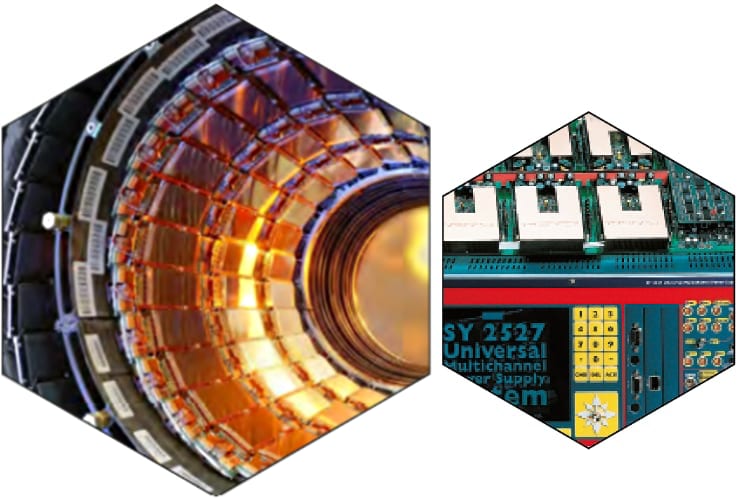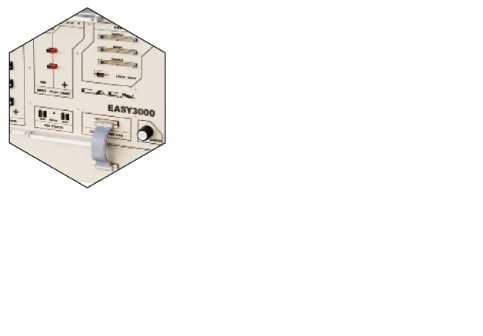-
DESIGNED FOR LHC
1998At the dawn of LHC CAEN started an ambitious R&D program to design and build a new generation of power supplies capable to cope with the demanding conditions of the new hadron collider. Many new challenges had to be faced by the engineering team who had to move in an uncharted territory without the support of detailed simulation and purposely built test facility.

-
FIRST LHC PROTOTYPES
2000At the beginning of the new century, in collaboration with universities and research centers, CAEN produced the first prototypes for the LHC derived from its SASY2000 family: the EASY was born. The design was driven by the research of components that were rad-tolerant up to 15 kRad and resilient to magnetic fields up to 2 kGauss.

-
LHC COMMISSIONING
2008By the startup of the LHC more than 7000 EASY modules were built in many different variants to satisfy all experimental needs. The approach was to create a scalable system with basic building blocks that could suit various requirements, the standard catalog products constitute the backbone in “safe area” were the controls and essential services are situated, then in the hostile area there are the EASY products with its own crates, bulk power supplies and electronic boards.

-
HIGGS BOSON DISCOVERY
2012After 10 years from the original design and 4 years of continuous operations EASY modules performed magnificently allowing the experiments to record data with unprecedented efficiency and announce to the World the discovery of the Higgs boson July 4th 2012.

-
LHC RUN 2 AND FIRST UPGRADES
2015During the first long shutdown of the LHC some experiments started to upgrade their systems, the EASY solution proved one more time to be effective and easily adaptable to new requirements, one of this is for sure the CMS Phase 1 Pixel upgrade where the old A4603 were modified to power DC-DC converter at 12 V rather than directly the load at ~2 V. Other detectors followed the same approach moving to DC-DC POL converters and CAEN answered with H versions of its EASY 3000 modules.

-
EASY BRIC 1
2018In January 2018 a new module with enhanced resilience, tested with an integrated dose of 20 kRad and in a 5 kGauss magnetic field, was presented at CERN. The B and Rad tolerant Intermediate Converter is a simple DC-DC converter but it embodies CAEN will to pursue R&D in hostile area, providing in a small form factor a 1600 W liquid cooled converter with a power density never achieved before.

-
HL-LHC
2025 >High Luminosity LHC is the next step of the LHC machine, with almost double luminosity it will collect in ten years ten times the data of the first 10 years of “standard” LHC operations. The increased collisions rate will pose a serious threat to electronics, which will need improved radiation resilience to be able to operate safely in such environment. Fortunately, the knowhow gathered during the design and operation of the LHC will give the necessary background to build the new EASY6000 family.
